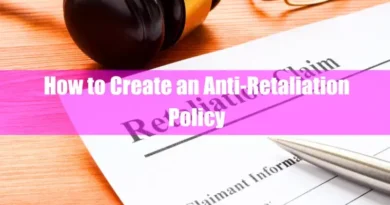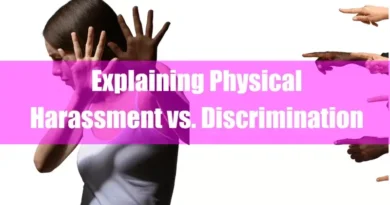Key Takeaways from Unwanted Communication and Its Progression to Harassment:
- Defining Unwanted Communication: It encompasses any form of contact that the recipient wishes to avoid, evolving into harassment when it’s repeated and causes distress. This includes calls, texts, emails, social media messages, or unexpected visits, disrupting the recipient’s sense of safety.
- Understanding the Spectrum of Communication: Communication ranges from desired to neutral to unwanted. Unwanted communication is intrusive, unwelcome, and creates discomfort for the recipient, affecting their well-being.
- Characteristics and Platforms of Unwanted Communication: Unwanted communication often features explicit rejection, lack of prior relationship or consent, high frequency and intensity, and inappropriate content. It can occur through traditional methods like phone calls and letters, as well as digital platforms such as email, social media, and texting.
- Impact of Unwanted Communication: It can have significant psychological effects, including anxiety, fear, and emotional distress, as well as social effects, such as disruption of relationships and daily life. Ignoring unwanted communication may not stop it and could potentially escalate the situation.
- Recognizing Unwanted Communication as a Red Flag: Early intervention is crucial, distinguishing it from flirting or misunderstandings. Understanding power dynamics and manipulation tactics helps in addressing it effectively.
- Protecting Yourself: Utilize digital security measures, assert boundaries through clear communication, and seek support from friends, family, or authorities if needed.
- Specific Contexts of Unwanted Communication: It can manifest in various contexts like workplace harassment, online environments, and romantic relationships, each requiring unique approaches to address.
- Understanding Legal Rights and Reporting: Familiarize yourself with harassment laws, report unwanted communication to appropriate platforms or authorities, and maintain thorough documentation for legal purposes.
- Moving Forward: Prioritize self-care, seek professional help if needed, and advocate for a safer online environment by raising awareness and supporting relevant organizations.
I. Defining Unwanted Communication
Unwanted communication is any form of contact you want to avoid receiving. Unwanted communication becomes harassment when it’s repeated and causes distress. This can include calls, texts, emails, social media messages, or even showing up uninvited. It’s key that the communication is unwanted, disrupting your sense of safety or creating a hostile environment.
II. The Spectrum of Communication: Desired, Neutral, and Unwanted
Communication exists on a spectrum. Desired communication is the ideal – a clear exchange of information or expression that fosters positive interaction. This can range from a friendly conversation with a colleague to a heartfelt conversation with a loved one. Neutral communication, on the other hand, may not be inherently positive or negative. It could be a simple service notification or an informational email.
Unwanted communication sits at the opposite end of the spectrum. It is any form of communication that is unwelcome, intrusive, and creates discomfort for the recipient. This discomfort can stem from various factors, including the sender-receiver relationship’s content, frequency, and nature.
III. Unwanted Harassment Characteristics and Platforms

A. Characteristics of Unwanted Communication
Unwanted communication often presents with a combination of the following characteristics:
- Explicit Rejection (Verbal and Non-Verbal): The recipient has clearly expressed their desire for no further contact, either verbally (“Please stop contacting me”) or non-verbally (blocking phone numbers and social media accounts).
- Lack of Prior Relationship or Consent: The communication is initiated by someone the recipient doesn’t know or has yet to interact with previously. Alternatively, there might have been a brief interaction in the past, but consent for further communication needed to be established.
- Frequency and Intensity: The sheer volume of messages or the aggressive nature of the content can be overwhelming and harassing. This can include excessive calls, texts, emails, or social media messages with inappropriate or threatening language.
- Content (Threats, Obscenity, Intrusive Inquiries): The communication content can be unwelcome. Examples include threats of violence, sexually suggestive messages, or excessively personal inquiries that make the recipient feel unsafe or uncomfortable.
B. Platforms for Unwanted Communication
Unwanted communication can occur through various channels, both traditional and digital:
1. Traditional Methods (Phone Calls, Letters):
Unwanted phone calls, particularly with silent treatment or harassing messages, can be intrusive. Similarly, receiving unsolicited letters with inappropriate content can be considered unwanted communication.
2. Digital Communication (Email, Social Media, Texting):
Digital communication has opened avenues for new forms of unwanted contact. This includes spam emails, unsolicited social media messages, and persistent texting from unknown numbers. The anonymity offered by some online platforms can embolden senders to engage in more aggressive behavior.
By understanding the characteristics and platforms of unwanted communication, we can better identify it and establish healthy boundaries to protect our well-being.
Also, read:
- Explaining Quid Pro Quo Harassment Under Title IX
- Quid Pro Quo Harassment: What It Is? Know Everything
IV. Understanding the Impact of Unwanted Communication

Unwanted communication can have a profound and lasting impact on the recipient’s mental and social well-being. This section explores the detrimental effects of unwanted communication on a personal and social level, highlighting the potential for escalation into more serious situations.
A. Psychological Effects: Anxiety, Fear, and Emotional Distress
One of the most significant impacts of unwanted communication is its toll on mental health. The constant barrage of unwanted messages can create a sense of anxiety, fear, and emotional distress. This is especially true when the communication contains threats, insults, or other forms of negativity.
Unwanted communication is a constant assault on our sense of peace, making us feel unsafe and vulnerable, especially with anonymous or threatening senders. This relentless intrusion can significantly impact mental well-being, leading to anxiety, depression, and even PTSD in severe cases.
B. Social Effects: Disruption of Relationships and Daily Life
The impact of unwanted communication extends beyond personal mental health. It can negatively affect the recipient’s social life and daily activities.
Unwanted communication can cascade negative effects, leading recipients to avoid social settings and isolate themselves. Concerns and hostility can damage personal and professional relationships and ultimately cause a loss of control and self-esteem.
C. The Cycle of Unwanted Communication and Its Potential Escalation
Ignoring unwanted communication doesn’t necessarily stop it. Sometimes, it can encourage the sender and lead to further escalation. The recipient may feel trapped in a cycle, unsure of how to respond, and fear retaliation if they attempt to stop the communication.
It’s important to understand that unwanted communication can serve as a red flag, potentially leading to more serious situations like stalking or cyberbullying. Early intervention and assertive communication are crucial in preventing escalation.
Also, read:
V. Recognizing Unwanted Communication as a Red Flag

Unwanted communication doesn’t always become harassment, but it can be a warning sign. This section explores how to recognize the red flags and equips you with strategies to protect yourself from unwanted contact.
A. Ignoring vs. Addressing: The Importance of Early Intervention
The temptation to ignore unwanted communication is understandable. However, this approach can backfire.
- The Fallacy of “Maybe They’ll Stop”: Ignoring the issue creates a false hope that the sender will get bored and stop. This is rarely the case, and it can embolden them to escalate their behavior.
- Setting Boundaries and Taking Action: Taking action, even if it’s simply a clear communication of your desire for no further contact, sets a boundary and demonstrates that you will not tolerate the behavior.
B. Understanding Power Dynamics and Manipulation Tactics
Some senders of unwanted communication use manipulative tactics to gain control over the recipient. Understanding these tactics is crucial for effective response.
- Guilt Tripping and Emotional Manipulation: The sender might try to guilt you into continuing communication by playing on your emotions. They might make false accusations or claim they’ll hurt themselves if you don’t respond.
- Threats and Intimidation: More blatant tactics involve threats of violence or harm to you or your loved ones. These threats should always be taken seriously.
- Preying on Vulnerability and Loneliness: Senders may target individuals who seem vulnerable or isolated, hoping to exploit their loneliness or lack of support systems.
C. Distinguishing Unwanted Communication from Flirting or Misunderstandings
Not all unwanted communication is malicious. It’s important to distinguish between unwanted advances, genuine attempts at flirtation, or even simple misunderstandings.
- Context and Intent: Look at the context of the communication. Is it persistent even after you’ve expressed disinterest? Does the content make you feel uncomfortable or unsafe? Genuinely interested individuals will respect the boundaries you set.
- History and Relationship: Consider your relationship with the sender. Is it someone you know well, or is it a stranger? Misunderstandings are more likely in established relationships.
- Respecting Boundaries: True respect means understanding and respecting your boundaries, even if it means disappointment. Anyone who persists after you’ve expressed disinterest is likely engaging in unwanted communication.
By recognizing these red flags and understanding the manipulative tactics used, you can take control of the situation and protect yourself from further unwanted contact.
Also, read:
VI. Protecting Yourself from Unwanted Communication
Unwanted communication can be stressful, but there are steps you can take to protect yourself. This section explores various strategies to manage digital security, assert boundaries, and seek support systems.
A. Digital Security Measures
The digital world presents unique challenges when it comes to unwanted communication. Here are some steps you can take to bolster your online security:
- Privacy Settings and Blocking Features: Use the privacy settings offered by social media platforms and messaging apps to restrict who can contact you and send messages. Additionally, most platforms allow you to block specific accounts or numbers.
- Strong Passwords and Two-Factor Authentication: Employ strong and unique passwords for all your online accounts. Consider using a password manager to generate and store complex passwords securely. Enable two-factor authentication wherever possible for an extra layer of protection.
- Selective Information Sharing Online: Be mindful of the information you share online. Avoid publicly displaying your phone number, home address, or other personal details on social media profiles.
B. Communication Strategies: Asserting Boundaries
Clear and assertive communication is key to stopping unwanted communication. Here’s how to effectively express your boundaries:
- Clear and Direct Communication of Unwanted Contact: Don’t be ambiguous. Clearly state that you want to avoid further communication. Be firm and direct in your message, leaving no room for misinterpretation.
- Documenting Interactions for Evidence: Keep a record of unwanted communication, including screenshots, emails, or voicemails. This documentation can be crucial if you need to report the issue to the authorities or file for a restraining order.
- Blocking Numbers and Accounts: Don’t hesitate to block unwanted contacts on your phone, social media accounts, and messaging apps. Blocking removes the avenue for further communication and sends a clear message.
C. Seeking Support Systems: Friends, Family, and Authorities
You don’t have to deal with unwanted communication alone. Seek support from trusted friends, family members, or even professional resources.
- Sharing Your Experience: Talking to someone you trust can provide emotional support and help you strategize responding to unwanted contact.
- Reporting to Platforms and Authorities: If the communication becomes threatening or harassing, report it to the social media platform or service provider. In severe cases, consider reporting the issue to the police.
By implementing these strategies, you can regain control of your communication channels and protect yourself from unwanted contact.
Also, read:
- Leveraging Technology for Harassment Prevention and Reporting
- Ongoing Initiatives: Building a Harassment-Free Workplace
VII. Unwanted Communication in Specific Contexts

Unwanted communication can manifest in various situations, each with its unique dynamics. This section delves into three prevalent contexts: the workplace, online environments, and romantic relationships.
A. Workplace Harassment: Unwanted Communication from Colleagues or Superiors
The workplace should be professional, but unwanted communication can disrupt that atmosphere. This can take many forms, including sexual harassment through advances, comments, or physical contact; cyberbullying like malicious emails, online rumors, or fake profiles; and even overly critical or hostile communication.
Fortunately, many workplaces have established reporting mechanisms to address these issues. If you experience unwanted communication, utilize these resources to ensure a safe work environment and stop the harassment.
B. Online Harassment: Trolling, Doxing, and Cyberstalking
The anonymity of online spaces can embolden malicious behavior like trolling (posting inflammatory content to provoke reactions), doxing (revealing someone’s private information like an address), and cyberstalking (repeatedly harassing or intimidating someone electronically).
These threats can be mitigated by proactively adjusting privacy settings, reporting suspicious activity to platforms, and understanding that ignoring trolls and not engaging with them can often be the best defense.
C. Romantic Relationships: When Persistence Becomes Unwanted
In romantic relationships, rejection is normal, but unwanted communication can emerge when someone persistently contacts you despite clear disinterest. This relentless pursuit can be emotionally draining and a red flag, potentially escalating to threats or harassment.
Remember, establishing clear boundaries and directly asserting your wishes is crucial, even in the face of romantic feelings.
Also, read:
- The Protect from Exploitation Act (PROTECT) 2003
- Creating Employee Survey for Harassment Assessment
- Ethical Decision-making Training: An Ultimate Guide
VIII. The Legal Landscape: Understanding Your Rights
Unwanted communication can have legal implications in the United States depending on its severity and content.
A. Understanding Harassment Laws in the US
Several federal and state laws in the US address unwanted communication that crosses the line into harassment. These laws protect individuals from repeated, unwanted contact that causes substantial emotional distress or creates a hostile environment.
1. Federal Communications Decency Act (FCDA): This law prohibits transmitting obscene, lewd, or harassing material electronically, including via phone calls and emails.
2. Telephone Consumer Protection Act (TCPA): This law restricts unsolicited telemarketing calls, automated robocalls, and spam text messages from businesses.
3. State Anti-Stalking and Harassment Laws: Most states have their own stalking and harassment laws that encompass both electronic and non-electronic communication methods. These laws often define the behaviors constituting harassment or stalking and potential penalties for violators. Examples include:
California Penal Code § 646.9: This California law prohibits harassing phone calls and electronic communications.
Texas Penal Code § 42.07: This Texas law addresses harassment, including offensive or threatening electronic communications.
4. Harassment Restraining Orders: Victims of harassment can seek restraining orders in state courts. These orders legally prohibit the sender from contacting you directly or indirectly. Consulting with a lawyer is crucial to understanding the specific process for obtaining a restraining order in your state.
B. Reporting Unwanted Communication
Reporting unwanted communication is vital for holding senders accountable and protecting yourself. Here are two main avenues for reporting in the US:
- Reporting Mechanisms on Social Media Platforms: Most platforms offer reporting mechanisms for harassment and abuse. The platform’s team reviews these reports and may take action, including removing the content or suspending the sender’s account.
- Law Enforcement Procedures and Reporting Protocols: Reporting to law enforcement is crucial in severe cases involving threats of violence, doxing, or situations where you fear for your safety. Police can investigate the situation and take appropriate legal action.
Remember, specific reporting procedures can vary depending on your location. Contacting your local law enforcement agency or legal resources can provide specific guidance on reporting unwanted communication in your state or country.
C. The Importance of Legal Documentation and Record Keeping
Thorough documentation of unwanted communication strengthens your case if you need to pursue legal action. Here’s what to keep:
- Screenshots and Records of Communication: Maintain screenshots, copies of emails, or voicemails as evidence of unwanted communication.
- Dates and Times of Contact: Document the dates and times of unwanted contact to demonstrate the repeated nature of the behavior.
- Police Reports and Legal Documents: Keep copies of any police reports or legal documents associated with the case.
By understanding your legal rights and taking steps to document unwanted communication, you can empower yourself to take action and seek protection.
Also, read:
- How to Prove Quid Pro Quo Harassment: 13 Powerful Evidences
- Quid Pro Quo Harassment vs. Hostile Work Environment Harassment
IX. Moving Forward: Reclaiming Control and Peace of Mind
The experience of unwanted communication can be emotionally draining and leave you feeling violated.
Healing from the emotional impact of unwanted communication requires self-care and support. Consider seeking professional help from a therapist to address any anxiety, fear, or trauma associated with the experience. Surround yourself with supportive friends and family who can offer a safe space to process your emotions and rebuild your security.
Don’t let unwanted communication define you. This experience can be an opportunity to build resilience and establish stronger boundaries. Learn to recognize red flags and communicate your needs assertively. Prioritize your mental and emotional well-being, and don’t hesitate to seek support if you encounter unwanted communication again.
By speaking out about your experience and raising awareness about unwanted communication, you can empower others to recognize and address it. Support organizations dedicated to online safety and mental health. We can create a safer and more respectful online environment for everyone.









